This post may contain affiliate links. If you use these links to buy something we may earn a commission. Thanks.
Certain mushrooms are known best for medicinal benefits, but some are easy to grow while others are difficult. So to access the healing gifts of mushrooms without major obstacles, you’ll need to know which are the easiest types to cultivate.
Turkey tail, red reishi, shiitake, and lion’s mane are the easiest medicinal mushrooms to grow. Other well-known healing mushrooms, such as chaga, cordyceps, and maitake, are more challenging to cultivate.
A focus on these aggressive-growing mushrooms will allow you to have a consistent and reliable supply. You could say they are the best medicinal mushrooms to grow since they are easy.
As more people are looking to plants and prevention, fungi can play a similar role in our well-being and longevity. As interest in medicinal mushrooms is on the rise, growing them is, too, as they can become pricey.
The best part about growing them yourself is the reduced cost, and the option to consume them fresh!
See: Grow a Mushroom Garden at Home in 4 Steps

Some are easier to cultivate indoors or outdoors, but most can be done in either setting. So the best choice for you depends on a number of factors.
Other factors to consider when choosing which medicinal mushroom to grow could include:
(1) their usage limitations, (2) what benefits they’ve shown, and (3) the growing technique or substrate you have available. We’ll look at this for each mushroom below the following introduction.
Related: Most profitable (edible and medicinal) mushrooms to grow
The Healing Power of Medicinal Mushrooms
Medicinal mushrooms have been used across various cultures for centuries in traditional medicine systems. The therapeutic properties come from the bioactive compounds they contain which offer a range of health benefits.
In general, medicinal mushrooms have qualities that are anti-inflammatory, immune-supportive, adaptogenic, cardiovascular-supportive, neuroprotective, anticancerous, and antibacterial/viral. Gut health, mood, and skin have also shown various improvements by consuming medicinal mushrooms.
The properties of the mushrooms don’t directly deal with the issues in the body, but aid the body in producing what it needs for defense.
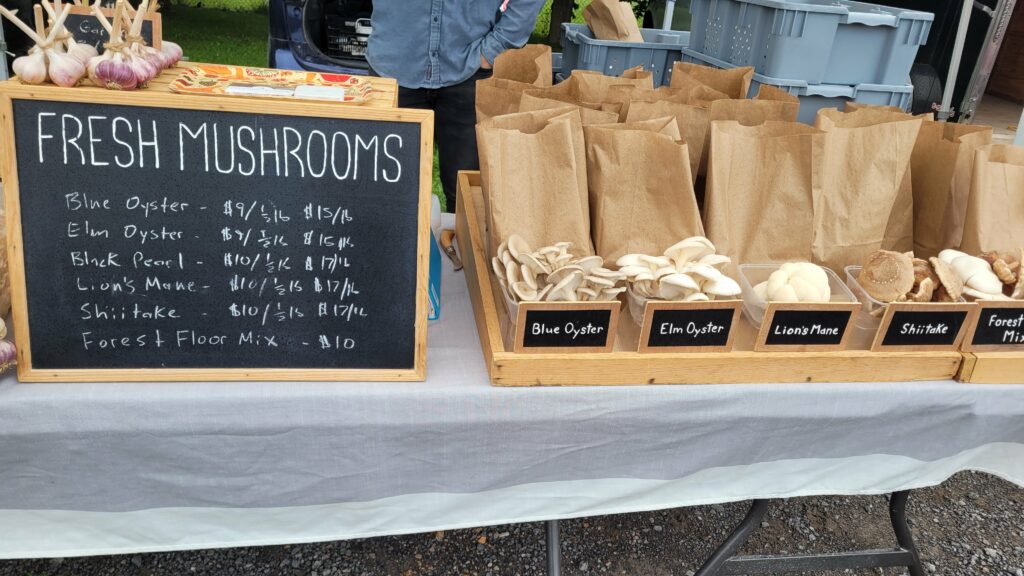
These valuable compounds are becoming bigger and bigger topics for scientific research. Some examples of current findings include:
- Turkey tail and reishi are particularly noted for anti-cancer activity and immunomodulation. These benefits are provided by polysaccharides present in fruit bodies of medicinal mushrooms (source).
- Shiitake mushrooms are particularly mentioned in regard to preventing tooth decay! And healthy teeth may prevent increased risk of heart disease, weak immune systems, and more.
- The compounds in lion’s mane have been shown to promote nerve growth with the potential to be neuroregenerative.
Those are just a couple examples, the tip of the iceberg, of what these delicious medicinal mushrooms may be capable of. And remember, none of this is health or medical advice, or a replacement for professional and personalized medical advice or treatment.
Bioactive compounds in healing mushrooms
A bioactive compound is a substance that has an effect on our tissues and cells once consumed.
The specific compounds in medicinal mushrooms provide several health contributions in unique and overlapping ways.
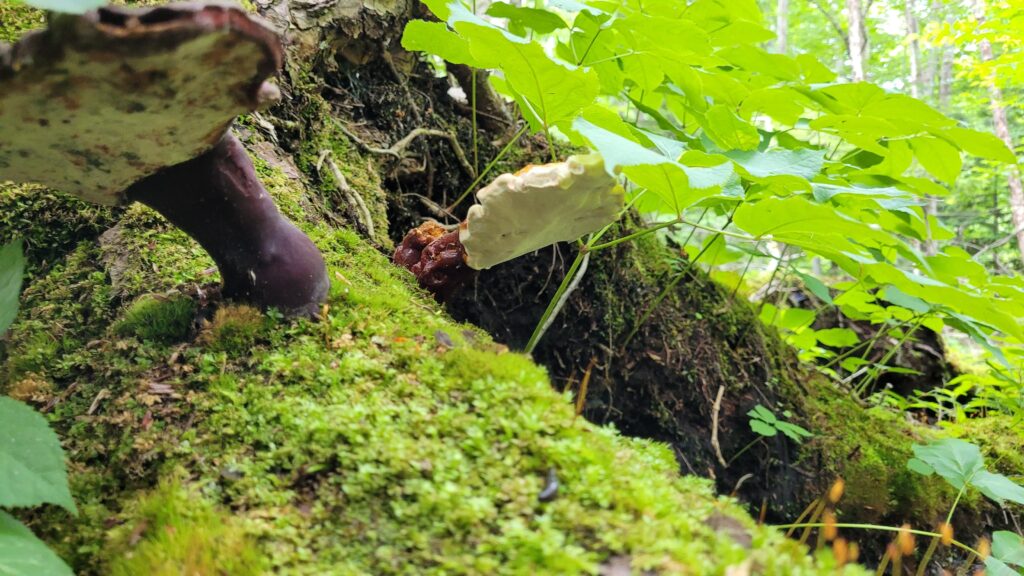
Here’s what the main compounds are and how they may benefit us:
1. Beta-Glucans & Polysaccharides:
- Beta-glucans are complex polysaccharides located in the cell walls of mushrooms.
- Polysaccharides are known for immune-modulating effects, antioxidant activity, and anti-tumor potential. Stimulated immune cells enhance our body’s defense mechanisms.
2. Triterpenes:
- Triterpenes are compounds responsible for the bitter taste and aroma of some mushrooms and other foods.
- Triterpenes in reishi have been studied for 5 years to discover more physiological activities, such as anti-inflammatory, antioxidant, and antitumor benefits.
- In general, these compounds may help reduce chronic inflammation, inhibit cholesterol synthesis, neutralize free radicals, and inhibit the growth of cancer cells.
4. Ergosterol (Provitamin D):
- Ergosterol in mushrooms is a pioneer to vitamin D. Yes, mushrooms can be a source of dietary vitamin D! Ergosterol is converted into vitamin D when mushrooms are exposed to sunlight or UV light.
- Vitamin D contributes to bone health, immune function, and overall well-being.
- As dried shiitake mushrooms are a popular culinary and medicinal staple in many cultures, their ergosterol content was studied for the sake of optimizing vitamin D content during the drying process.
6. Antioxidants:
- Mushrooms are rich in antioxidants, including phenolic compounds (compound breakdown by species)—you’ll see, they included lions mane, shiitake, and reishi in their article, and they have a large number of compounds compared to the rest listed.
7. Adaptogens:
- Polysaccharide and triterpene compounds in mushrooms can act as adaptogens. Adaptogens are generally known to help the body adapt to stress and maintain balance.
- Reishi has been extensively researched for adaptogens, and Dr. Dov Pine has sorted these findings in his well-written article.
Individual mushroom species may contain different combinations and levels of bioactive compounds. Each may result in varying therapeutic effects.
Including a variety of medicinal mushrooms in your diet could provide a diverse and more comprehensive approach to harnessing the benefits of their compounds.
Turkey Tail

Turkey tail is by far the easiest medicinal mushroom to cultivate. It’s a highly aggressive grower that is found in nearly all worldwide forested regions. They are found growing on all wood types.
See: 3 Best Ways to Grow Turkey Tail (In + Outdoors)
Turkey tail is known best for its medicinal value and isn’t sought after for nutrition or culinary use. The texture is like thin unrippable cardboard, so is best consumed when steeped as tea, or dried and powdered.
Turkey tail has been shown to have anti-cancer effects, provide gut and immune support, prevent osteoporosis, and maintain brain health. Dr. Dov Pine summarizes these main health benefits here.
Turkey tail can be grown in or outdoors. Most often, it’s grown outdoors as logs offer an abundance of substrate for years of passive production, while indoor cultivation can be a lot more active work.
Any fresh logs cut from a healthy tree will do for turkey tail. If you happen to damage any wood and still wish to use it, inoculate it with turkey tail! It’s your best chance at not wasting a log.
For indoor cultivation, you can inoculate bags or buckets filled with hardwood sawdust.
To get started with either, use liquid cultures with a jar or bag of grain with an injection port. Once inoculated with turkey tail, expand the ‘spawn’ you’ve made with sawdust in bags or buckets, or on any log cut from a healthy tree.
Red Reishi
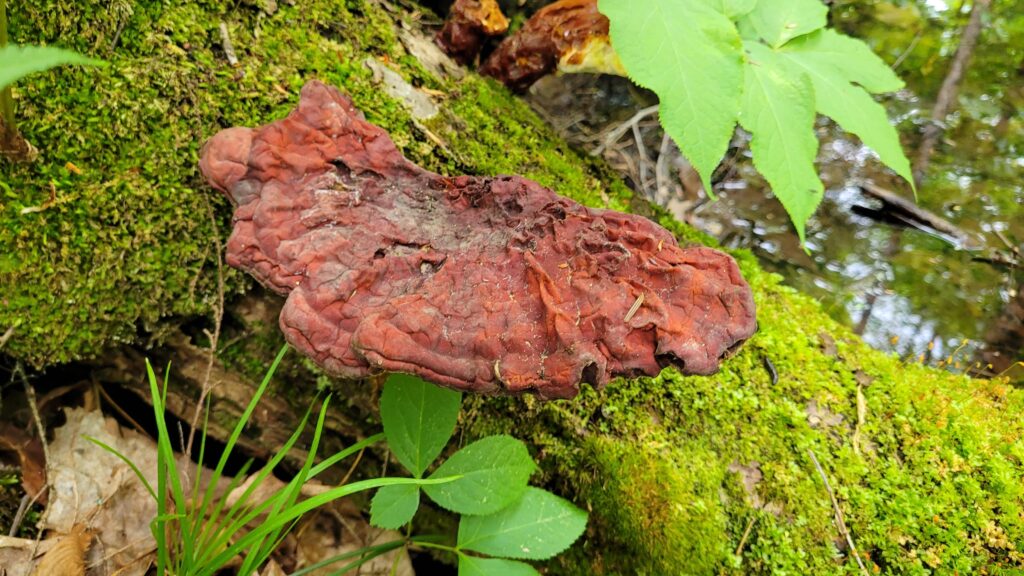
Red reishi is a beginner-level mushroom to cultivate indoors. Growing reishi outdoors is for more advanced growers.
Reishi is also prized for its medicinal value rather than culinary uses.
This thorough review of reishi summarizes its history of use “For a long time, G. lucidum has been used as a traditional medicine for treating neurasthenia, debility of prolonged illness, insomnia, anorexia, dizziness, chronic hepatitis, hypercholesterolemia, mushroom poisoning, coronary heart disease, hypertension, prevention of acute mountain sickness, “deficiency fatigue”, carcinoma, and bronchial cough in the elderly.”
The quickest way to grow your own reishi is on a fruiting block! These blocks are already set up and ready to fruit for you.
If you’ve grown mushrooms outdoors on logs already, you could take a swing at either red reishi or hemlock reishi. Be sure to grow red reishi on hardwood logs, such as beech, elm, maple, or oak, and hemlock reishi on hemlock wood, only.
Shiitake
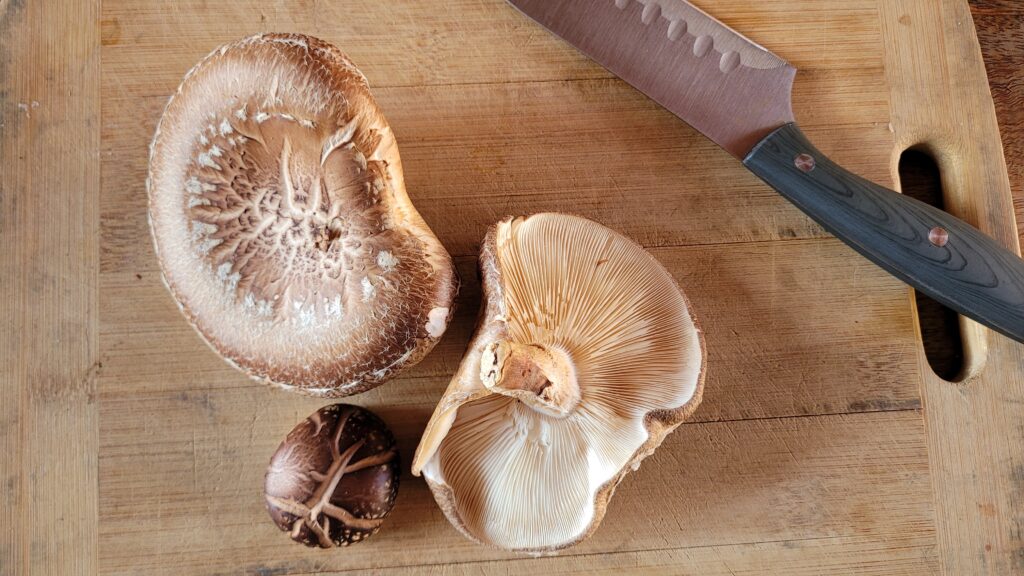
Shiitake mushrooms are another very easy and beginner-level medicinal mushroom to grow. The best part is that they are highly delicious! We love fresh shiitake mushrooms but dried ones are also, if not more, rich in beneficial compounds.
Shiitakes have been used by various cultures for a very long time—both in cuisine and medicine.
As one of the most popular outdoor mushrooms to grow, shiitakes are best grown on logs.
You can also grow shiitakes indoors year-round, however, it takes a lot more effort. Some people enjoy the best of both worlds!
Outdoor cultivation is pretty passive once the upfront work is done, but also seasonal.
Plug spawn is the easiest way to make logs. We find that plugs allow a cheaper startup as they require fewer tools to be purchased.
See: Essential Tools to Make Mushroom Logs (Complete List)
Lion’s Mane
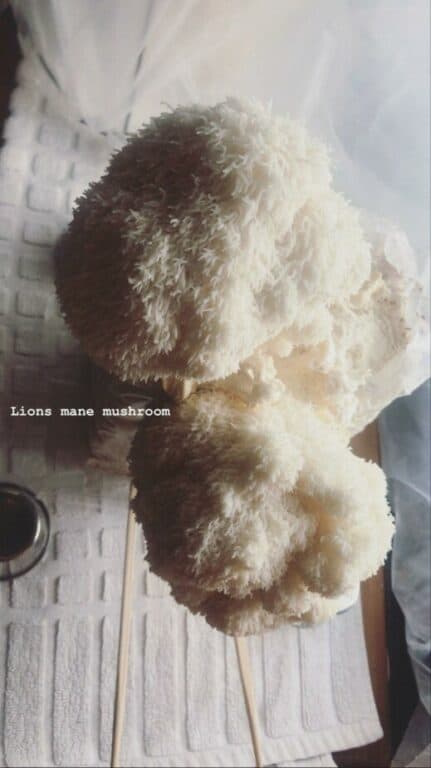
Lion’s mane is a beginner-level medicinal mushroom to grow indoors, but intermediate outdoors.
Not only is lion’s mane known for its benefits to our brains, but for its versatility in the kitchen and chewy texture!
Before deciding on which way to cultivate lion’s mane, a “spray and grow” kit provides an easy taste test.
We tasted it, and decided to cultivate it outdoors on logs! So we stocked up on plug spawn and chose the right wood type for the job.
If indoor cultivation suits you better, you’ll need grain spawn and a method!
See: 6 Ways to Grow Mushrooms at Home (Compared)
Recent Posts
There’s no shortage of full-sun ground covers for zone 4 climates! Each plant in this list can withstand the frigid temperatures and also enjoy the hot sun in summer. Full sun means that a plant...
There's no shortage of full sun ground covers, not even in zone 3! Zone 3 climates offer hot but short-lived summers and very cold winters. So each plant in this list can withstand the frigid...
